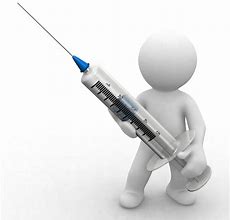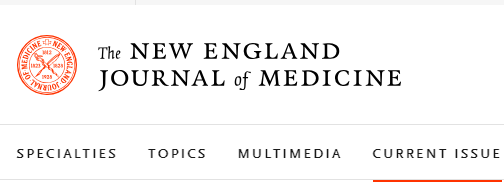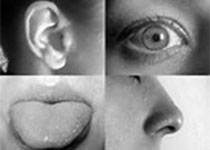过敏的婴儿可以吃花生么?
2019-04-22 蒋本然 达医晓护
近二十年来,儿童的过敏疾病发生率逐年上升,特别是过敏性皮肤疾病和食物过敏。大部分的食物过敏 (90%) 是由以下8种食物引起的:牛奶、鸡蛋、鱼、甲壳类贝类、坚果、花生、小麦和大豆。其中花生是最常见的引起过敏的食物之一。研究发现,虽然过敏性疾病和遗传因素的关系密切,但是环境因素,比如婴儿时期的营养喂养也有很大的影响。所以,在过敏性疾病家族史或有过敏性疾病的高风险婴儿中,应该在哪个时间节点添加这些高致
The incidence of pediatric atopic diseases, particularly allergic skin disease and food allergy, have been increased in the past two decades. Most of the food allergies (90%) are caused by eight groups, including cow milk, eggs, fish, crustacean shellfish, tree nuts, peanuts, wheat and soybean. Peanut is one of the most common food allergies. Although atopic diseases clearly associated with genetic factors, environmental factors, including early infant nutrition, have an important role on their development. For high-risk infants, including Infants and young children with a family history of atopy and those with a personal history of atopy, recommendations regarding when to introduce highly allergenic foods, have shifted over time according to the updated researches in the past 20 years.
让我们来看看新鲜出炉的美国儿科学会2019新版的临床指南怎么说。
美国儿科学会(American Academy of Pediatrics, AAP) 回顾总结了最新的关于预防儿童过敏研究后在2109年3月发布了新版的关于婴幼儿变应性疾病的早期营养干预临床指南。指南确认有越来越多的研究发现越早接触这些特定的食物可能正是降低高风险儿童对食物有过敏反应的机率的方法,并且有最新的研究结果支持在早期添加花生以预防花生过敏。“没有理由推迟给宝宝吃花生、鸡蛋或鱼等,就因为这些是被认为的容易引起过敏的食物,” 研究报告的撰写者之一、医学博士Scott Sicherer说,“这些食物可以在早期就添加,就如同大米,蔬菜,或水果这些不容易引起过敏的食物一样。”
2019版的新指南和2000年的观点完全相反。根据之前的研究结果,美国儿科学会曾在2000年建议,对于高风险儿童,比如有过敏性疾病家族史或有过敏性疾病的 (特别是中重度湿疹)婴幼儿,应进一步推迟添加某些高致敏性食物的时间,这样可能有助于预防某些变态反应性疾病,比如特应性皮炎, 哮喘,以及食物过敏。建议包括:1岁时添加牛奶;2岁时添加鸡蛋;3岁时添加花生、坚果和鱼。这也就是说,将近20年前的观点是,有发生食物过敏的高风险儿童应在2~3岁前都要避免鸡蛋和花生这种容易引起过敏的食物。
The American Academy of Pediatrics (AAP) examined the latest research on how to prevent allergies in children and published clinical report “The Effects of Early Nutritional Interventions on the Development of Atopic Disease in Infants and Children” in March 2019. It confirms that a growing body of evidence supports the early introduction of these certain food may reduce the risk of allergy to that specific food. The latest research has demonstrated early introduction of peanut-based foods to infants to prevent peanut allergies. “There is no reason to delay giving your baby foods that are thought of as allergens like peanut products, eggs or fish,” said Dr. Scott Sicherer, MD, FAAP, a coauthor of the report. “These foods can be added to the diet early, just like foods that are not common allergens, like rice, fruits or vegetables.”
To prevent some allergic diseases, particularly atopic dermatitis, AAP had previously suggested in 2000 that the introduction of certain highly allergenic foods be delayed further in high-risk children, including Infants and young children with a family history of atopy and those with a personal history of atopy, particularly those with moderate-to-severe eczema. It was recommended that start cow's milk at one year old; eggs at two years old; and peanuts, tree nuts, and fish at three years old.
LearningEarlyAboutPeanutAllergy(LEAP)研究——最新版指南的临床依据
尽早引入花生以减少花生过敏的推荐正是基于一项名为Learning Early About Peanut Allergy(LEAP)的临床研究。这项由美国国立卫生研究院(NIH)旗下国立过敏与感染性疾病研究院(NIAID)资助的研究招募了640名7-11个月龄的有严重湿疹和/或鸡蛋过敏史宝宝,属于花生过敏高风险人群。这些宝宝被随机分成2组,一组在4至11个月时添加含有花生的辅食并有规律地进食至5岁,另一组完全不吃花生直至5岁,比较两组宝宝的花生过敏发生率。结果显示,在完全规避食用花生的宝宝里面有17%对花生过敏。相比之下,被随机分配到早期引入花生类辅食的宝宝组发生花生过敏的只有3%。LEAP的实验研究者发现,在婴儿早期开始有规律地进食含有花生的食物可以降低81%花生过敏的风险。这个研究结果在2015年美国过敏,哮喘和免疫学会年会上发布并发表在同年的国际权威医学期刊新英格兰医学杂志(NEJM)。之后的两年里,美国国立卫生研究院(NIH)属下的过敏与感染性疾病研究院(NIAID)联合了25个专业组织,联邦机构,过敏患者联盟一起论证并制定了针对花生过敏的临床指南。
Recommendations on the prevention of peanut allergy are based primarily on the Learning Early About Peanut Allergy (LEAP) trial. This NIH-funded clinical trial included 640 infants aged 4 to 11 months of age considered to be at high risk of developing peanut allergy because they had severe eczema, egg allergy, or both. The babies were randomly divided into two groups. One group was given peanut-containing foods to eat regularly, and the other group was told to avoid peanut-containing foods until 5 years of age in order to compare the incidence of peanut allergy. Of the children who avoided peanut, 17% developed peanut allergy by the age of 5 years. In contrast, only 3% of the children who were randomized to eating the peanut snack developed allergy by age 5. Thus, researchers found that regular consumption of peanut-containing foods beginning early in life reduced the risk of developing peanut allergy by 81 percent. The results of the LEAP study was discussed in February 2015 at the American Academy of Allergy, Asthma & Immunology Annual Meeting and published in the New England Journal of Medicine. National Institute of Allergy and Infectious Diseases(NIAID), part of the National Institutes of Health, worked with 25 professional organizations, federal agencies, and patient advocacy groups to develop clinical practice guidelines to address the prevention of peanut allergy.
好了,我们现在知道了可以通过早期添加花生来预防高风险宝宝的花生过敏,现在来看看临床指南里的干货,是不是可以清晰明了地指导我们具体实施。
首先需要谨记的是,安全第一,永远不可以给4岁以下婴儿及幼儿进食整颗花生,因为有窒息的风险。建议使用适合婴幼儿年龄的花生粉,花生糊或其他特制的花生配方食品。其次,在添加花生制品的辅食之前,要先给宝宝尝试添加别的辅食。
It is important to note that infants and small children under 4 should never be given whole peanuts due to the risk of choking. Instead, peanut powder, ground peanuts and other specialized formulations are advised in an age-appropriate manner. Introduce other solid foods into your infant’s diet before trying peanut-containing foods.
指南1:对于花生过敏高风险婴儿(有严重湿疹,或鸡蛋过敏,或两者都有)
在宝宝4-6个月大的时候,原则上是应该接受含有花生的辅食,这样会降低孩子以后对花生过敏的风险。但在添加之前,需要去医院见专科医生,做一下过敏原测试,比如血液检测或是皮肤点刺试验,看宝宝是否已经对花生过敏。测试结果可以帮助医生决定是否应该添加花生以及最安全的添加途径。
如果测试结果显示是可以安全添加花生制品的话,医生会推荐你在家里给宝宝添加。或者,你会更愿意选择在医生的监护指导下进行第一次的添加。另一方面,如果测试结果是宝宝已经对花生过敏,那么医生可能会建议应该在专科医生这里非常谨慎地添加,或者可能建议宝宝完全避免花生。所以,在给宝宝添加含有花生的辅食时,还是要听从医生的指导。
Guideline 1 recommends that if your infant has severe eczema, egg allergy, or both, he or she should have peanut-containing foods introduced into the diet as early as 4 to 6 months of age. This will reduce the risk of developing peanut allergy. Check with your infant’s healthcare provider before feeding your infant peanut-containing foods. He or she may choose to perform an allergy blood test or send your infant to a specialist for other tests, such as a skin prick test. The results of these tests will help to determine if peanut should be introduced into your infant’s diet and, if so, the safest way to introduce it.
If your infant’s test results indicate that it is safe to introduce peanut-containing foods, the healthcare provider may recommend that you introduce peanut-containing foods to your infant at home. Or, if you prefer, the first feeding may be done in the healthcare provider’s office under supervision. On the other hand, testing may indicate that peanut should be carefully introduced at a specialist’s facility or not introduced at all because your child may already have developed an allergy to peanut. Follow your healthcare provider’s instructions for introducing peanut-containing foods to your infant.
指南2:对于花生过敏中度风险婴儿(有轻度至中度湿疹)
父母可以在6个月左右添加含有花生的食物以减少发生花生过敏的风险。不过在添加之前需要先考虑一下家庭的饮食习惯,如果花生制品不是家庭常规的饮食习惯(并且你的宝宝没有严重湿疹,或鸡蛋过敏,或两者都有),也不用强行在如此早期引入含有花生的辅食。医生会告诉你宝宝的湿疹是否轻度到中度。你可以选择在家里进行花生制品的辅食添加,但是如果你和你的医生愿意的话,也可以选择在医生这里由医生监护下开始。
Guideline 2 suggests that if your infant has mild to moderate eczema, he or she may have peanut containing foods introduced into the diet around 6 months of age to reduce the risk of developing peanut allergy. However, this should be done with your family’s dietary preferences in mind. If peanut containing foods are not a regular part of your family’s diet (and your infant does not have severe eczema, egg allergy, or both), do not feel compelled to introduce peanut at such an early stage. Your child’s healthcare provider can tell you whether your child’s eczema is mild to moderate. You may then choose to introduce peanut-containing foods at home. However, if you or your healthcare provider prefer, the first feeding can be done in the provider’s office under supervision.
指南3:花生过敏低风险婴儿(没有湿疹或任何其他食物过敏)
根据孩子的年龄特点,家庭饮食日常习惯和喜好,文化风俗等,父母可自由选择给宝宝添加含有花生的食物的时间(比如,纯母乳喂养的宝宝在6月龄以后)。
Guideline 3 suggests that if your infant has no eczema or any food allergy, you can freely introduce peanut-containing foods into his or her diet. This can be done at home in an age-appropriate manner together with other solid foods, keeping in mind your family’s dietary routines, preferences and cultural practices (ie, after 6 months of age if exclusively breastfeeding).
最后,要提醒大家的是,从小吃花生虽然可以大为降低花生过敏的风险,但也不是解决花生过敏的万能钥匙的!如果有过敏还是要根据医生的专业意见来治疗。
本网站所有内容来源注明为“梅斯医学”或“MedSci原创”的文字、图片和音视频资料,版权均属于梅斯医学所有。非经授权,任何媒体、网站或个人不得转载,授权转载时须注明来源为“梅斯医学”。其它来源的文章系转载文章,或“梅斯号”自媒体发布的文章,仅系出于传递更多信息之目的,本站仅负责审核内容合规,其内容不代表本站立场,本站不负责内容的准确性和版权。如果存在侵权、或不希望被转载的媒体或个人可与我们联系,我们将立即进行删除处理。
在此留言













